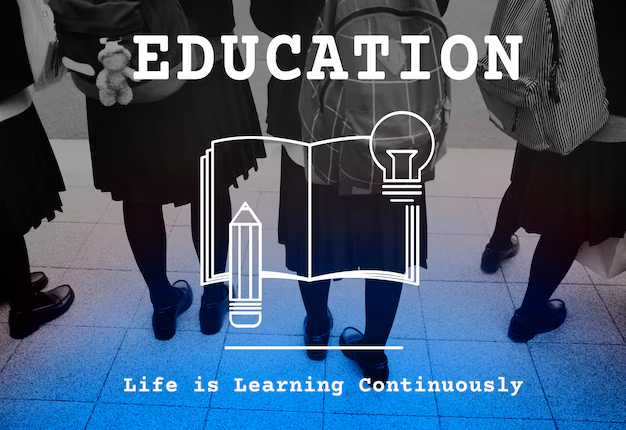The higher education sector offers a vast range of career opportunities, from teaching and research to administration and support roles. Whether you are a recent graduate considering a career in academia or a professional seeking to transition into the field of higher education, navigating this landscape can be both rewarding and challenging. In recent years, the higher education sector has undergone significant transformation, driven by technological advancements, shifting societal needs, and changes in student demographics. These transformations have created new opportunities, but they have also brought forth challenges that require adaptation and innovation.
In this article, we will explore the diverse career opportunities within higher education, the challenges that individuals may encounter when pursuing a career in this field, and the future trends that will shape higher education careers in the coming years. We will provide insights into the skills and qualifications necessary to succeed in this dynamic environment and offer advice on how to navigate your career path in the higher education sector.
Key Takeaways
- Higher education careers are diverse, spanning faculty roles, research positions, administration, and support services.
- Challenges in higher education include rising competition, financial pressures, and workload management.
- Emerging trends such as online learning, lifelong learning, diversity and inclusion, and data analytics are shaping the future of higher education careers.
- Developing a strong professional network, pursuing relevant qualifications, and staying adaptable to change are essential strategies for success in higher education.
Opportunities in Higher Education Careers

Higher education careers span a broad spectrum of roles, ranging from faculty positions to administrative and support staff roles. The sector provides opportunities for individuals with diverse skills and interests to contribute to the academic community. Here, we will explore some of the key career paths in higher education.
Faculty and Teaching Roles
Teaching is the most well-known career path in higher education. Professors, lecturers, and adjunct faculty are responsible for educating students, conducting research, and contributing to academic discourse within their field of expertise. Faculty members typically hold advanced degrees, such as a Ph.D. or Ed.D., and are often required to publish scholarly articles and engage in research activities.
Faculty roles can be broadly categorized into:
- Tenure-Track Faculty: These positions are typically permanent and involve a combination of teaching, research, and service to the institution. Tenure-track faculty members work towards earning tenure, which offers job security and academic freedom.
- Adjunct Faculty: Adjunct professors are part-time instructors who often work on a contract basis. While these roles can offer flexibility, they typically come with fewer benefits and job security compared to tenure-track positions.
- Lecturers and Senior Lecturers: These faculty members are usually hired to teach specific courses and may or may not be involved in research. They are often permanent staff, but the position is typically non-tenure-track.
Teaching careers in higher education allow individuals to share their passion for their discipline with students, mentor the next generation of scholars, and contribute to the advancement of knowledge in their field. However, the increasing demand for teaching professionals to balance multiple roles—such as research, administration, and community outreach—can present challenges.
Research Positions
For those interested in research, higher education offers a wealth of opportunities. Universities and colleges are home to numerous research institutes and centers that focus on fields ranging from the humanities to the sciences, engineering, and social sciences. Research positions are often funded by grants from governmental agencies, private foundations, or industry partnerships.
Research roles include:
- Principal Investigators (PIs): These individuals lead research projects, secure funding, and manage research teams. They typically hold advanced degrees and significant experience in their field of study.
- Postdoctoral Researchers: After completing a doctoral degree, researchers may choose to work in a postdoctoral position to further develop their expertise and contribute to ongoing research projects. Postdocs gain valuable experience that helps them advance to faculty or independent research positions.
- Research Assistants: These roles are typically filled by graduate students or early-career researchers who support PIs with data collection, analysis, and writing.
Research careers in higher education allow individuals to explore groundbreaking ideas and contribute to solving complex global issues. However, the competitive nature of securing funding and the demands of publishing frequently can present challenges for those pursuing research careers.
Administrative and Support Roles
Higher education institutions are complex organizations that require a wide range of administrative and support staff to ensure smooth operations. These roles can be found in various departments, including admissions, student services, finance, human resources, and academic affairs.
Key administrative and support roles in higher education include:
- Academic Advisors: These professionals work closely with students to help them select courses, plan their academic path, and achieve their educational goals.
- Enrollment Management and Admissions Officers: These staff members are responsible for recruiting students, managing admissions processes, and maintaining enrollment data.
- University Executives and Administrators: These individuals hold senior leadership positions, such as deans, provosts, and chancellors, and are responsible for setting institutional policies, overseeing budgets, and making strategic decisions.
- Student Affairs Professionals: These staff members manage student organizations, housing, counseling, career services, and other student-related services.
Administrative careers in higher education are essential for the smooth functioning of institutions. These roles often require strong organizational, communication, and leadership skills. They may not always receive the same recognition as teaching and research positions, but they are crucial for the overall success of universities and colleges.
Library and Information Services
Librarians and information specialists play a vital role in supporting the academic mission of higher education institutions. With the rapid increase in digital resources, these professionals are crucial in curating, organizing, and providing access to information for students, faculty, and researchers.
Roles in this field include:
- Academic Librarians: These professionals manage collections, conduct information literacy instruction, and provide research assistance to students and faculty.
- Digital Archivists and Information Technologists: These individuals focus on managing and preserving digital resources, ensuring that research data and academic content are accessible and secure.
Library and information services professionals are integral to supporting teaching and research activities, particularly as higher education becomes increasingly digitized. These positions require expertise in information management, research skills, and technology.
Challenges in Higher Education Careers

While higher education careers offer numerous opportunities, they also come with a range of challenges. These challenges can vary depending on the role and institution, but some common hurdles include:
Increasing Competition for Positions
The demand for faculty positions, particularly tenure-track roles, can be extremely competitive. As more individuals pursue advanced degrees and postdoctoral work, the pool of candidates for academic positions grows, making it more difficult to secure full-time employment in the field. Additionally, universities are increasingly relying on adjunct and part-time faculty to meet teaching needs, leading to fewer full-time, permanent roles.
Rising Cost of Education and Financial Pressures
Many individuals pursuing careers in higher education take on significant student debt to complete their advanced degrees. However, salaries in academia, especially for early-career faculty and adjuncts, can be relatively modest, making it difficult to repay student loans or achieve financial stability. In addition, many universities and colleges are facing financial pressures, which can lead to budget cuts, reduced funding for research, and limited resources for faculty and staff.
Workload and Burnout
Higher education professionals, particularly faculty members, often face heavy workloads that require balancing teaching, research, and administrative duties. The pressure to publish frequently, secure research funding, and meet institutional expectations can lead to burnout. For administrators and support staff, managing large-scale operations while addressing the needs of students, faculty, and staff can be equally challenging.
Navigating Institutional Politics
Higher education institutions can be complex organizations with intricate bureaucracies and institutional politics. Navigating these dynamics can be particularly challenging for those in leadership or administrative roles, where decision-making often requires balancing competing interests from faculty, staff, students, and external stakeholders.
Adapting to Technological Changes
The increasing role of technology in higher education has led to new opportunities for innovation, but it has also created challenges. Faculty and staff must continuously adapt to new technologies, digital tools, and online learning platforms, which can be overwhelming for those who are less tech-savvy. Additionally, the rapid pace of technological change means that higher education professionals must remain agile and open to new ways of teaching, learning, and conducting research.
Future Trends in Higher Education Careers

The landscape of higher education is changing rapidly, and it is essential for professionals in the field to stay abreast of emerging trends. Some of the key future trends that are likely to shape higher education careers include:
Growth of Online and Hybrid Learning
The COVID-19 pandemic has accelerated the shift toward online and hybrid learning models, and these trends are likely to continue in the future. As students demand more flexible learning options, institutions are increasingly offering online courses, degree programs, and virtual classrooms. This shift presents new opportunities for individuals interested in teaching and supporting online education, as well as those working in areas like instructional design, e-learning, and educational technology.
Focus on Lifelong Learning
As the demand for skilled workers continues to evolve, higher education institutions are placing greater emphasis on lifelong learning. Professionals are increasingly seeking opportunities for continuing education and career advancement. This trend has led to the growth of certificate programs, micro-credentials, and other short-term learning options that allow individuals to acquire new skills without committing to a traditional degree program.
Increased Focus on Diversity, Equity, and Inclusion
There is a growing emphasis on diversity, equity, and inclusion (DEI) in higher education. Institutions are working to create more inclusive and welcoming environments for students and staff from diverse backgrounds. This focus on DEI presents new career opportunities in areas like student support services, diversity programming, and faculty recruitment.
Rise of Data and Analytics
The use of data and analytics in higher education is on the rise, with institutions using data to improve student outcomes, enhance teaching and learning, and streamline operations. Professionals with expertise in data analysis, educational technology, and institutional research will be in high demand as universities and colleges increasingly rely on data-driven decision-making.
Growing Role of International Collaboration
As globalization continues to influence higher education, institutions are placing greater emphasis on international partnerships, study abroad programs, and cross-border research collaborations. This trend presents career opportunities for individuals with expertise in international relations, global education, and intercultural communication.
Higher Education Trends For Students

Students have evolving needs and expectations that higher education faculty and institutions should address.
One notable trend is the emergence of a consumer mindset among students that is driven by growing cost concerns. The pursuit of debt-free education has captured the attention of today’s learners, leading them to demand convenience, personalization and uncompromising quality from their educational experiences. This shift places institutions under pressure to adapt and provide value that justifies a large financial investment.
Additionally, students are increasingly focusing on tangible results, such as skills that not only enrich their academic experience but also enhance their employability. The need to graduate with a job and facilitate career mobility has led to a surge in demand for programs that directly correlate with market needs.
However, a contrasting trend emerges as a considerable number of graduating high school seniors are unprepared for future challenges. According to a post-graduate readiness report by YouScience, 75% of graduates feel “moderately, slightly or not at all prepared.” Many students require additional support in building foundational skills such as writing, critical thinking and professional capabilities.
This trend underscores the importance of addressing the gap between high school and college, emphasizing the need for comprehensive academic support systems to ensure that all students can thrive in the complex and demanding environment of higher education.
As institutions and faculty grapple with these trends, a holistic approach to education that combines affordability, skill development, and academic preparedness becomes increasingly vital in meeting the diverse needs of students.
Higher Education Trends For Faculty
Faculty members need to adapt to emerging trends that redefine their roles and responsibilities.
A major trend, especially with the growth of AI, is the need for faculty to be technology-savvy. The integration of new instructional technologies and pedagogical approaches demands that educators remain aware of technological advancements and be comfortable navigating the new digital terrain. This not only enhances the learning experience for students but also ensures faculty members remain effective and relevant in a technology-driven educational environment.
Another significant trend shaping faculty dynamics is the move towards a multidisciplinary approach. Faculty members are increasingly expected to straddle multiple disciplines to support applied learning and facilitate a more interconnected academic experience. This shift is particularly evident in the growing number of adjunct faculty members moving between fields, contributing to a more diverse and adaptable educational environment.
Efficiency in grading is also emerging as a key trend for faculty. The demand for more streamlined assessment processes is driving the adoption of better rubrics and automated grading systems. This not only saves time for faculty but also enables them to provide higher-quality and more consistent feedback to students.
As the pressure to balance teaching, research, and administrative responsibilities intensifies, these trends illustrate the need for faculty members to embrace change.
Higher Education Trends For Institutions and Programs
Institutions and their partners in higher education are navigating transformative trends that reflect the evolving landscape of learning and workforce demands.
One prominent trend is the development of career-focused learning in modernized, stackable formats. Institutions are increasingly recognizing the value of offering programs that align with specific career paths, providing students with tangible skills and knowledge that enhance their employability. Stackable credentials, which allow learners to accumulate certifications and degrees in stages, are gaining popularity because they offer flexibility and relevance in a rapidly changing job market.
A second trend for institutions and their partners is addressing the individuals with “Some College, No Credential” (SCNC), which has become a strategic focus. As of July 2021, the SCNC population has risen to 40.4 million, an increase of 1.4 million from the previous year.
The emphasis on re-enrollment initiatives aims to tap into this population, increasing overall enrollment rates and ensuring that individuals with prior higher education have the opportunity to complete their degrees.
Furthermore, institutions and their partners are adapting their coursework to meet the ever-evolving needs of the workplace. The close collaboration with employers and the integration of industry-relevant content ensure that graduates possess the expertise required for success in their future jobs. This trend highlights a shift towards a more dynamic and responsive education system that prepares students not just academically but also for the practical demands of the professional world.
As institutions and partners continue to embrace these trends, they contribute to the creation of a more agile and responsive higher education ecosystem that meets the diverse needs of learners and employers alike.
There is an Increasing Scrutiny of Degree Value
The perceived value of a college degree is undergoing intense examination. While a degree generally provides a wage premium and career mobility, its worth can vary significantly by field and institution. With rising tuition costs and student debt, there is greater pressure on higher education to demonstrate clear value and outcomes for graduates. “
“The public has mixed views on the importance of having a college degree, and many have doubts about whether the cost is worth it, according to a new Pew Research Center survey.”
Risks: Institutions that fail to effectively communicate and deliver on the value of their degrees may face decreased enrollment and funding challenges. Graduates who struggle to find value in their degrees can impact institutional reputation and alumni relations.
Opportunities: Institutions that emphasise career readiness, provide transparent outcomes data, and align their programs with market needs can enhance their value proposition. By offering high-quality, relevant education and strong support services, institutions can attract and retain students seeking a solid return on their investment. The future of higher education requires practical programs that will have an impact.
Universities are Prioritising Talent Management for the Future of Higher Education.
In the wake of the pandemic, higher education institutions had to focus on talent management to attract and retain staff. Employees now seek improved work/life balance, opportunities for career advancement, and flexible work arrangements, including hybrid and remote options.
Risks: Institutions that neglect these needs may experience higher turnover rates, decreased morale, and difficulty recruiting top talent. Inadequate attention to staff well-being can affect overall institutional performance and student satisfaction.
Opportunities: Institutions that embrace flexible work policies, invest in staff development, and foster a supportive work environment can enhance employee satisfaction and retention. Attracting and retaining top talent with a vision for a healthy future of higher education will ultimately contribute to a more vibrant and effective educational environment.
Also Read : The Future Of Higher Education: Navigating Challenges And Embracing Opportunities
Conclusion
Higher education careers offer a wide range of opportunities, from teaching and research to administration and support roles. However, the sector is not without its challenges, including rising competition, financial pressures, and the need to adapt to technological advancements. By staying informed about emerging trends and developing the necessary skills and qualifications, individuals can successfully navigate their careers in higher education. As the landscape of academia continues to evolve, the opportunities for growth and innovation are boundless, making this an exciting and dynamic field to pursue.
FAQs
What qualifications do I need for a career in higher education?
Qualifications depend on the role. For faculty positions, an advanced degree (typically a Ph.D.) is required, while administrative and support roles may require specific degrees or certifications related to the field.
How can I get started in a career in higher education?
Begin by pursuing relevant educational qualifications, gaining experience through internships or entry-level roles, and networking with professionals in the field.
What are the best career opportunities in higher education?
Top opportunities include faculty positions, research roles, student affairs, academic advising, and administrative leadership positions.
How competitive are faculty positions in higher education?
Faculty positions, particularly tenure-track roles, are highly competitive. Building a strong publication record and gaining experience in teaching and research can increase your chances.
What are the challenges of working in higher education?
Challenges include rising costs of education, financial pressures, heavy workloads, navigating institutional politics, and adapting to technological changes.
How has the COVID-19 pandemic impacted higher education careers?
The pandemic accelerated the adoption of online and hybrid learning, changing the way education is delivered and creating new opportunities for careers in online teaching and educational technology.
What are the future trends in higher education careers?
Key trends include the growth of online learning, increased focus on lifelong learning, diversity and inclusion, data analytics, and international collaboration.




